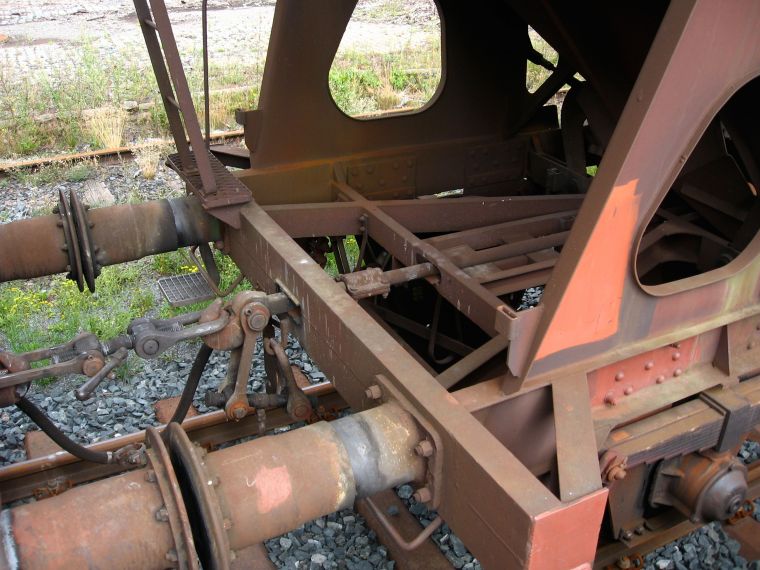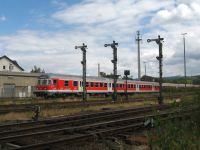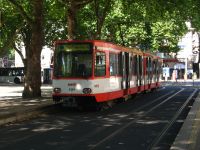Prepared

Posted: 9 August 2008

This work is licensed under a Creative Commons Germany license.
Notes
I didn’t actually plan on posting this at all, even less as the very first thing of my rail fan trip today, but labrat-78’s Coupled made me think I should.
These are two Fcs-type (I don’t know what that means either) bulk cars, coupled together with the old chain-and-buffer system. You can see that the chain of one car is used while the one from the other, right car is hanging around idly. Now, what’s really interesting is what is happening to the right of this all. As you can see, from the buffers there are two beams going straightly to the back, which just form part of the basic frame. What is more interesting is that there are also two beams going to a central beam in the middle, to which also the hook is connected. The car is built in a way that it can transmit the buffer loads both using the buffers on the outside, or using a central beam.
The reason for this is that the old chain-and-buffer coupling sucks, and has done so for a long time. More or less all rail cars and locomotives built in (continental?) europe after the second world war follow a similar pattern, so they can be easily converted to a central, automatic coupling. Such a conversion would have to be done incredibly fast if you don’t want to bring all of europe’s railroads to a stand-still. Most cars are actually better prepared for this conversion than this one, which would still need a beam from the center beam to the car end. The designated coupling for this is not the american, by the way, but rather a design that is compatible with the standard used in Russia.
The original plan was for the coupling to be changed some time during the late sixties or early seventies. However, some eastern european railroad agencies couldn’t afford that, and since the unity of the system was more important than fast coupling, it had to be abandoned. These days, passenger trains run in fixed sets anyway, so it does not matter, with EMUs and DMUs using automated (but often not compatible) couplers. In the freight business, some specific bulk-haul trains have been converted to the new couplers, but all general traffic is still done the old way.

 Deutsche Version
Deutsche Version Entire Gallery
Entire Gallery

 Next Picture
Next Picture
 Previous Picture
Previous Picture